The number of possible workplaces is required as input for the evaluation, as well as the selection of the relevant rotation plan (fair distribution, even distribution, uneven distribution) according to which the evaluation should be carried out.
Please note: |
When examining the job rotation, an average working time of 7-8 hours is assumed. If the shift duration deviates from this time, the job rotation can still be used to determine an ergonomically advantageous job rotation. |
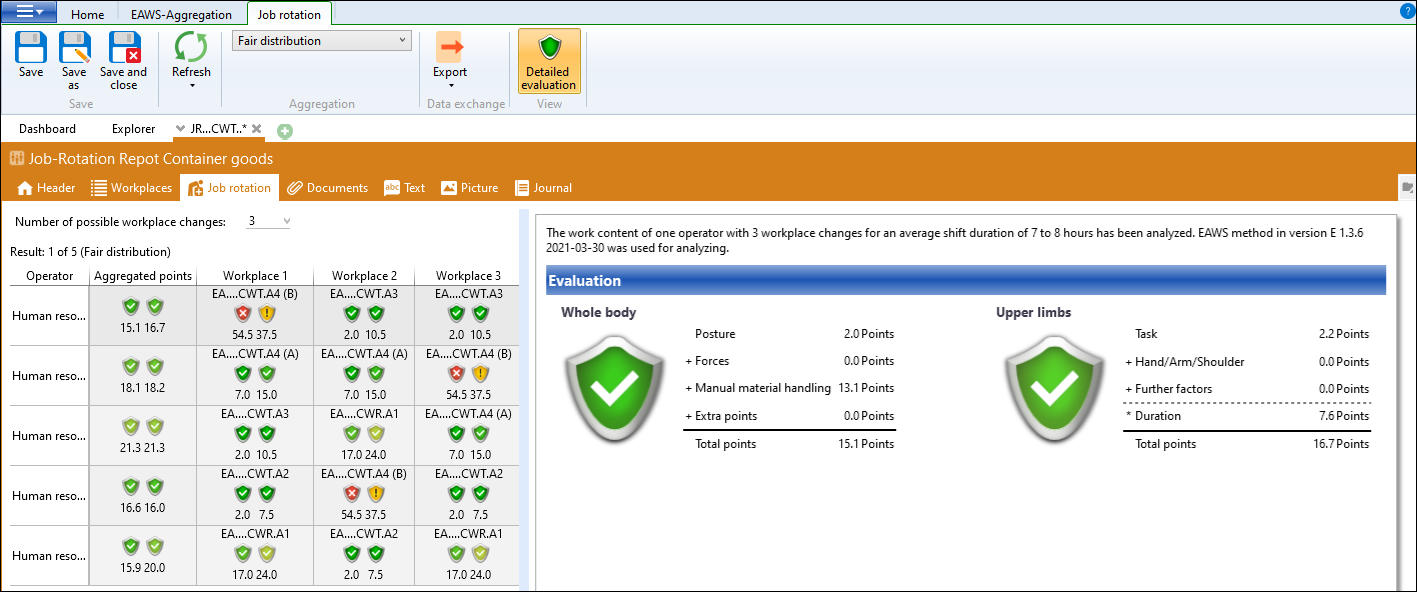
Tab Job rotation
The result should be interpreted as follows:
The first worker works the first third of his shift at workplace EA....CWT.A4 (B) and then changes to workplace EA....CWT.A3. He stays at this workplace for the last third as well. The second worker starts at workplace EA....CWT.A4 (A) etc. Each worker changes his workplace no more than twice, which means he works at a maximum of 3 workplaces. This ensures that despite a "red" workplace, all workers are "green". For example, worker 1 is assessed with 15.1 points for the entire body and 17.3 points for the upper extremities despite working at an EA....CWT.A4 (B) workplace. If he worked there for the entire duration of the shift, he would be assessed with a red rating of 54.5 points for the entire body and 37.5 points for the upper extremities.
Course of action:
1. Insert workplaces in workplaces tab
2. Selection of the number of possible workplace changes (1-10) in job rotation tab
Please note: |
The number of workplace changes indicates how often the workers change their workplace assuming that the workers work the same amount of time at each workplace. With a number of 1, one change takes place so that a worker works at one workplace for the first half of the shift and then moves to a different one if required. |
3. Click on Refresh / Job Rotation
4. Change between the different aggregations via the Job Rotation / Aggregation ribbon and selection of the most suitable change system for the particular situation.
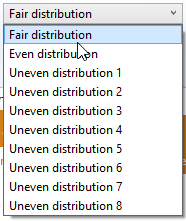
Selection of aggregation
Please note: |
Clicking on Refresh / Job Rotation calculates several rotation plans. The rotation of a worker is displayed in one line of the rotation plan. The aggregated EAWS® evaluation (aggregated points column) for this rotation is independent of the sequence in which the workplace changes. The determined rotation plan for all workers fulfills the condition that each workplace can only be staffed by one worker at a certain point in time within the rotation plan. Alternatively, the Aggregation can be used to specify a certain rotation of workplaces. |
The rotation duration is constant. It is calculated as follows: Net shift time / (number of workplace changes +1).
Depending on the points from Sections 1-3 and Section 4 of the workplaces, possible aggregations of results are created, and strains from Sections 1-4 (body posture, forces, handling loads, and strains on the upper limbs) are spread evenly across workers.
The job rotations are calculated via the Refresh button. The Detailed Evaluation button shows the composition of the aggregated points. The evaluation of the individual workplaces is displayed on the workplace name with a tooltip.
The result of an aggregation can be exported using the Job Rotation / Data Exchange ribbon Export .
The following options are available:
•Job rotation as picture
•Job rotation as picture to clipboard
•Job rotation as text to clipboard
Data copied to the clipboard can then be inserted in Excel for further processing.
The following rotation plans are calculated:
•Fair distribution - The workplaces are distributed in such a way that the workload is evenly distributed among all workers. This distribution is displayed first.
•Equal distribution - Every worker should work once at every workplace. It is ideal if the number of workplaces and the change of workplaces fit together perfectly.
•Uneven distributions - The workplaces are distributed in such a way that the workload on all workers is as low as possible.
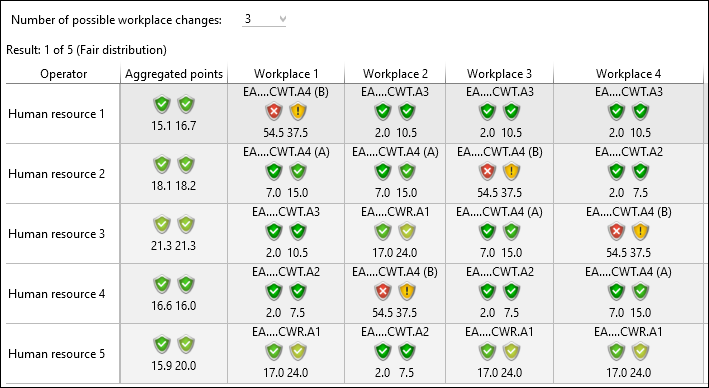
Fair distribution
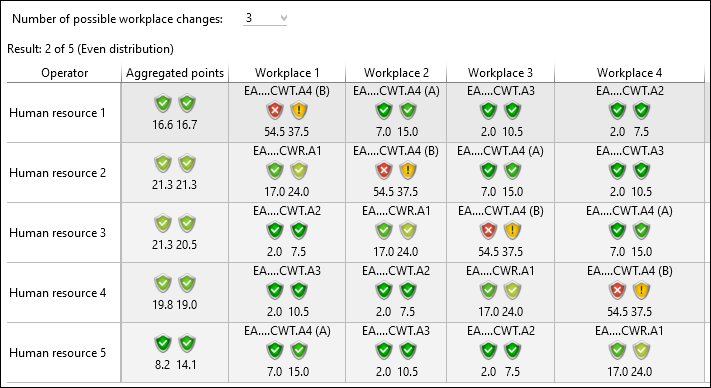
Even distribution
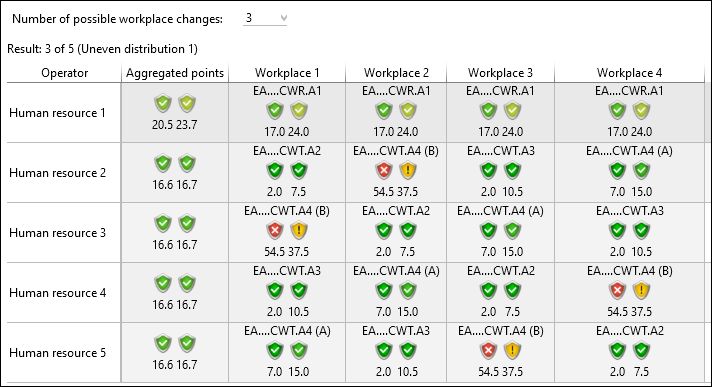
Uneven distribution